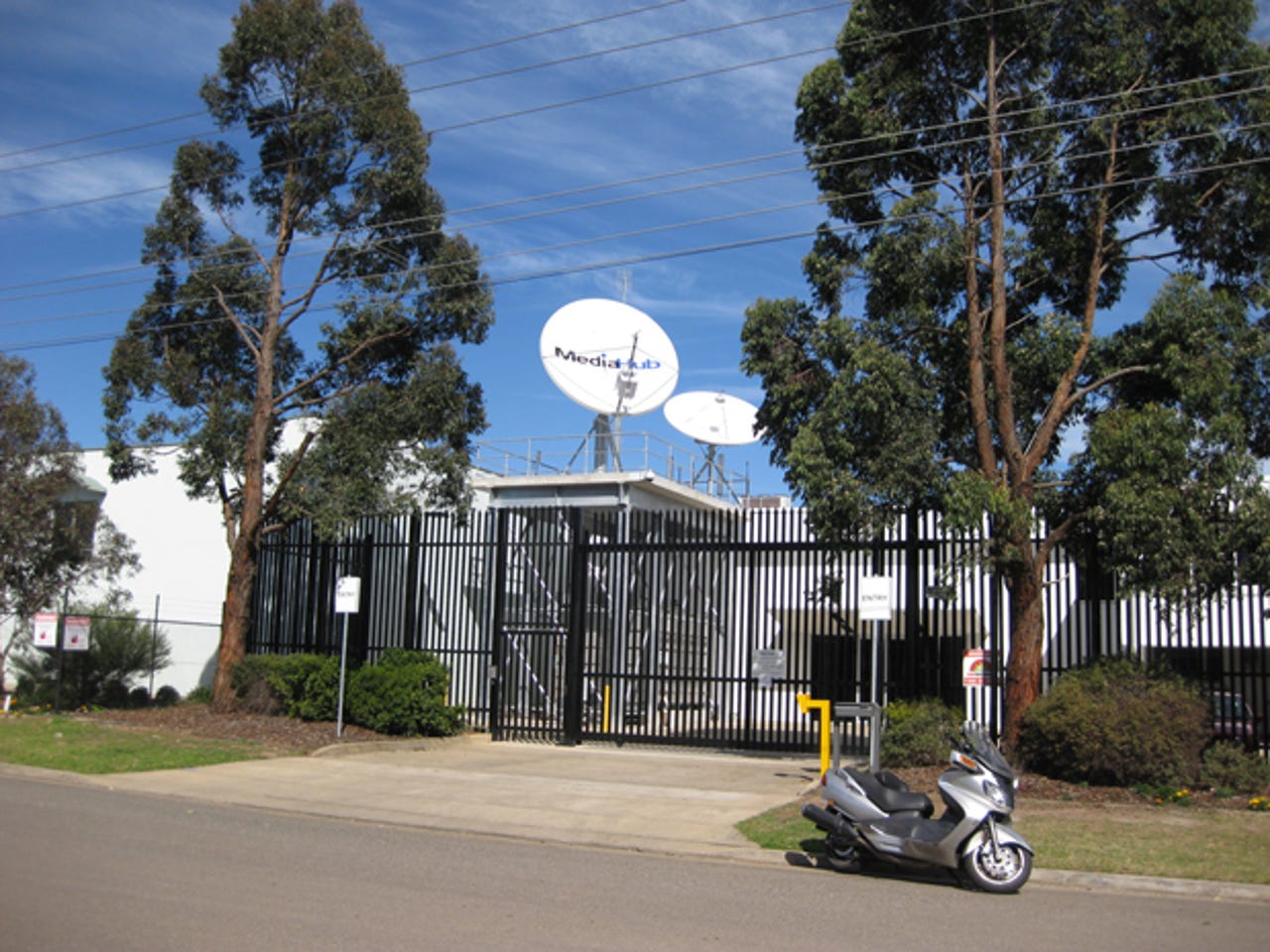Photos: inside ABC, WIN MediaHub


MediaHub is one of the only facilities of its type in Australia and the rest of the world, broadcasting digital television across different parts of Australia. The facility is responsible for services like ABC's 24-hour news channel and the children's channel ABC3.
"Anything that comes out of the ABC now, comes out through this facility," said Hogg.
However, it hasn't always been smooth sailing for MediaHub, with the facility being blamed for a series of technical glitches and broadcast delays that occurred earlier this year.
It's a futuristic facility, with loads of clean white walls and automatic doors that make "swooshing" noises.
Staffed 24 hours a day, seven days a week, the operations floor is where the video files are sent from WIN and the ABC studios around Australia to MediaHub via FTP.
The video is then managed, re-encoded and then delivered to broadcast servers. Almost everything in MediaHub is built on IP- and server-based technology.
"This is where all the signal and product comes together. It's aggregated here. The operations floor is one of the two hearts of the MediaHub facility," said Hogg.
These screens show, among other things, the outgoing signals and regional feeds.
MediaHub employs around 60 staff. Manning several stations around the facility and often responsible for dozens of feeds, the operators work around the clock to prevent and fix problems with the broadcast should they arise. The operator is also responsible for placing the ABC and WIN station logos into the broadcast, as well as inserting relevant commercials and hourly news broadcasts, which differ from region to region.
Here we have a multi-operator station, affectionately dubbed "the pit". The smooth broadcasts we often take for granted are the work of operators who can often be responsible for 49 schedules at one time.
The facility sits on fibre networking provided by Telstra, Optus, Digital Distribution Australia (DDA) and AAPT. The ABC has eight dedicated fibre networks running to MediaHub. When quizzed about the effect the NBN will have on MediaHub, Hogg said he believed it would be business as usual.
"I think it'd be great in providing fibre to the home," said Hogg, "but it won't have much of an effect on MediaHub."
These are operation bays, called break-out suites, which are activated and manned whenever there's too much for one operator to handle.
"I've been in television for over 25 years. Really, this is the latest, state-of-the-art facility of its kind anywhere in Australia and around the world," said Hogg, referring to its modular operations.
This is the dedicated operation bay for ABC 1.
The second "heart" of MediaHub is the back room, which Hogg calls the "nerve centre". This is where all the gear, servers and networking lives.
Some of the hardware includes: Cisco switches, Grass Valley K2 Media Servers (pictured), Media Proxy recording devices, Evertz decoders, Miranda systems that create the ABC and WIN logo overlays and ticker tape, Snell CS2 media ingesters, and Dell Server platforms.
Since the facility deals primarily with digital signals, all the cables are one colour.
"You'd normally have lots of different coloured cables, which mean different things; you have CAT [category 5 or 6] cables and SDI [secure digital interface] cables. All of our media is moved around by CAT cables via the network, there's not a lot of direct output — it's all data," said Hogg.
This is the networks operations equipment.
Part of the challenges in building this system is finding a way to interface with a myriad of components. It's a complex task which Hogg says requires a lot of planning.
"We have three routers; we have a main building router, we have a router for the ABC and we have a router for WIN," said Hogg.
These are the encoders for the ABC. You can't see it in the photos, but there are labels for each state that it broadcasts in.
Here's a close up of the schematic that monitors the equipment.
Inergen gas bottles, used in case of fire.
"These are the Inergen gas bottles," said Hogg. "We have fire levels, which is a fire warning system built into the building. If we were to get to level 4, the Inergen gas will push all the oxygen out of the room. It sounds like a jumbo jet when it goes off."
Andrew Hogg beside the channels he helps make available.
At the moment MediaHub is broadcasting 150 channels, with the eventual aim to ramp it up to 300. It'll be interesting to see what content they dish out in the future.